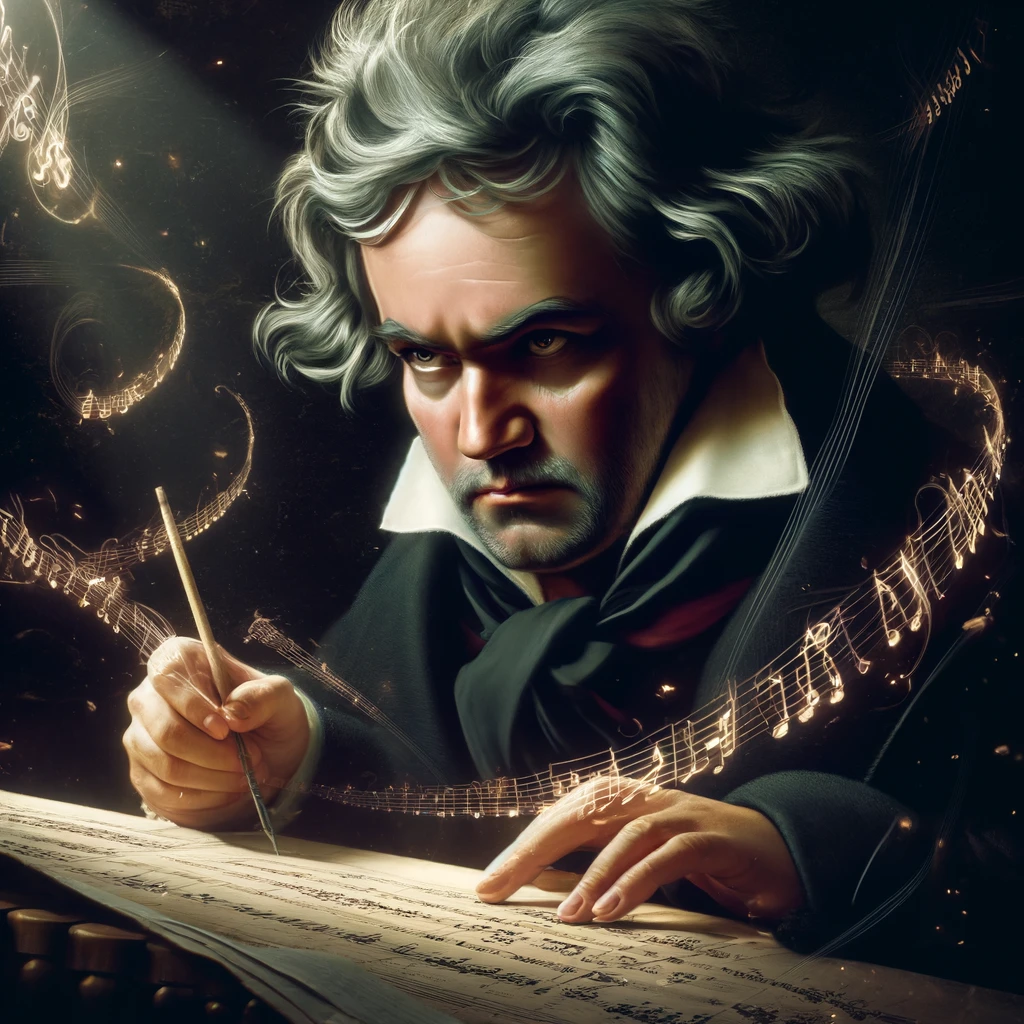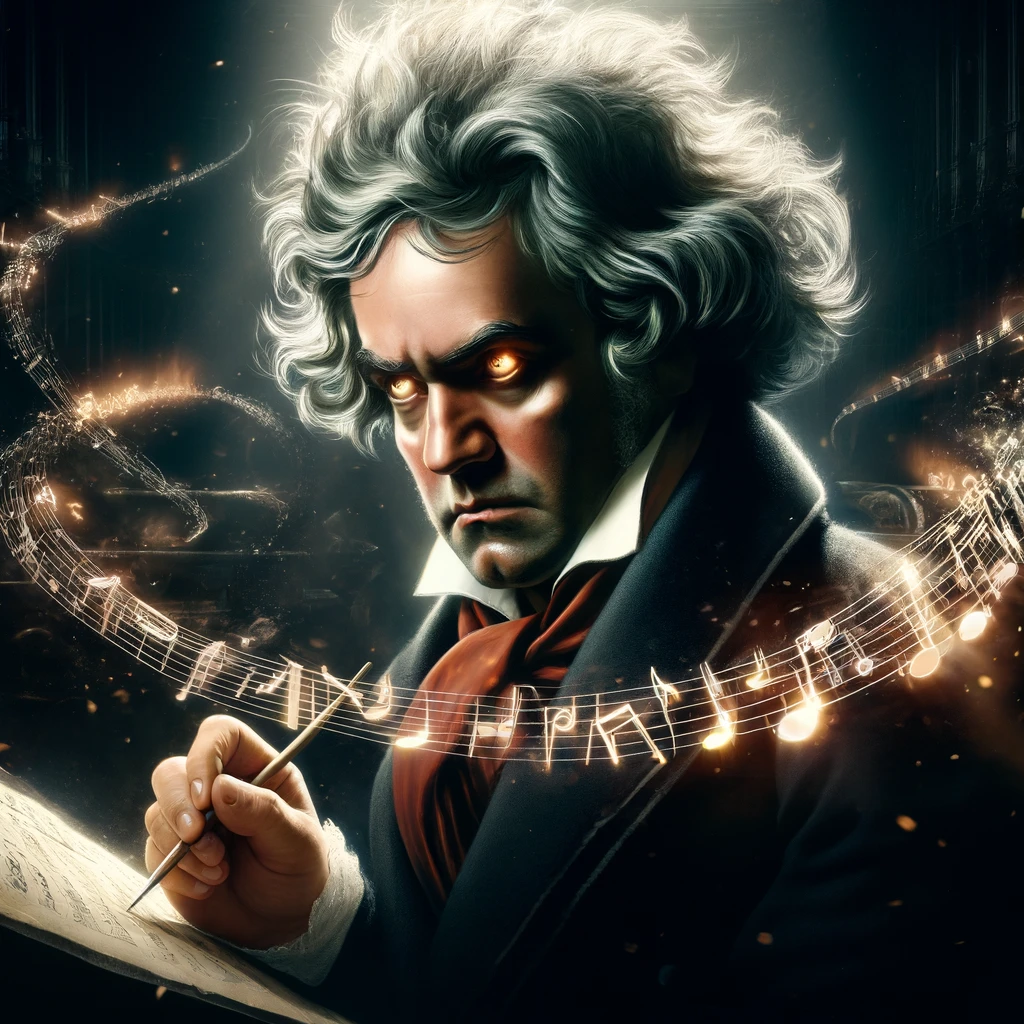
Unveiling Beethoven’s “Unplayable” Grosse Fuge
Ludwig van Beethoven, a titan of classical music, remains one of the most revered composers centuries after his passing. While his symphonies and sonatas are celebrated worldwide, some of his works, like the Grosse Fuge, Op. 133, are lesser-known yet incredibly significant in the landscape of classical music. This piece, often regarded as “unplayable,” not only showcases Beethoven’s audacious creativity but also reflects his profound depth as an artist pushing the boundaries of musical expression.
The Genesis of Grosse Fuge
The Grosse Fuge was originally conceived as the final movement of his String Quartet No. 13 in B-flat major, Op. 130, composed in 1825. This period in Beethoven’s life was marked by profound personal challenges, including deteriorating health and near-total deafness. Despite these obstacles, he continued to compose with relentless innovation and complexity.
Initially, the Grosse Fuge was meant to conclude the quartet, but it was met with bewilderment and criticism from both audiences and performers. Its complexity and demanding nature led to it being described as “incomprehensible” and “unplayable.” The piece’s dense structure, extensive fugue, and dissonant harmonies stretched the listeners’ and performers’ abilities to their limits.
Breaking Down the Barriers
What makes the Grosse Fuge so groundbreaking? First, it’s the sheer complexity of its structure. The fugue, a type of composition that involves the interweaving of multiple independent melodies, is executed on a grand scale by Beethoven in this piece. It is not just any fugue; it is a double fugue, containing two distinct subjects that are developed simultaneously, creating a dense and intense musical texture.
The use of dissonance in the Grosse Fuge was particularly revolutionary. At a time when pleasing harmonies and structured forms were the norms, Beethoven’s aggressive employment of dissonant chords was both shocking and visionary. These dissonances create a tension that is rarely resolved, pushing the emotional capacity of music to convey struggle and conflict.
The Reception and Impact
Upon its first performance, the Grosse Fuge baffled its audience. The musicians found it extraordinarily difficult to play, and listeners were unprepared for its radical departure from the more digestible compositions of the time. Following its initial reception, Beethoven’s publisher persuaded him to replace it with a new, more accessible finale for the Op. 130 quartet. The original Grosse Fuge was then published separately as Op. 133.
Despite its rocky beginnings, the Grosse Fuge has come to be appreciated as a work of genius. Over time, it has been recognized for its bold innovation and profound depth. Modern interpretations view it as a reflection of Beethoven’s personal struggles, mirroring his determination to overcome his physical limitations and societal expectations.
Legacy and Continuing Influence
The Grosse Fuge’s impact on music extends far beyond its initial reception. It has inspired countless composers and musicians to explore the limits of their own creative expressions. Its acceptance into the classical repertoire as a masterpiece signifies a shift in musical tastes, from the structured and predictable to the exploratory and challenging.
Today, the piece is celebrated not only for its technical prowess but also for its emotional depth. It stands as a testament to Beethoven’s ability to convey the complexities of human emotion through the language of music. The Grosse Fuge challenges performers and audiences alike to rethink what music can be and to appreciate the beauty in the unconventional.
Beethoven’s Grosse Fuge remains a monumental work in the annals of classical music. By pushing the boundaries of what was considered playable and understandable, Beethoven not only expanded the technical horizons of string quartet writing but also challenged and enriched the auditory experience of music. This piece, once deemed “unplayable,” now resonates as a profound expression of artistic will, reminding us that true art often lies in the courage to transcend the familiar and confront the unknown.

The Technical Innovations
Beethoven’s Grosse Fuge stands as a revolutionary piece not only in its composition but also in its technical demands. The fugue’s complexity is emblematic of Beethoven’s late style, which often pushed the boundaries of conventional music theory. The Grosse Fuge, with its overlapping themes and intricate counterpoints, requires a high level of precision and emotional understanding from its performers.
Each voice in the quartet partakes in an intense dialogue, with themes that are continuously developed and transformed. This results in a texture that is both rich and challenging, demanding unwavering attention from both players and audience. The technical innovations in this piece are not merely for show; they serve a deeper emotional purpose, reflecting the turmoil and passion of Beethoven’s own life experiences.
Emotional Resonance and Symbolism
The emotional depth of the Grosse Fuge cannot be overstated. It is a piece that ventures deep into the realm of human emotion, exploring themes of struggle, tension, and ultimately, resolution. Some music historians and theorists have suggested that the tumultuous nature of the fugue reflects Beethoven’s personal struggles with deafness and isolation. Others see it as a broader commentary on the human condition, encapsulating the chaos and beauty of life itself.
The use of dissonance plays a crucial role in the emotional impact of the Grosse Fuge. Beethoven uses these musical tensions not just to challenge the ear, but to evoke a profound emotional response. This approach was quite ahead of its time, predating the dissonance-heavy explorations of later composers like Wagner and Schoenberg.
Modern Interpretations and Performances
Over the years, the Grosse Fuge has been subject to various interpretations, each bringing new dimensions to this complex work. Modern string quartets often approach the piece with a mix of reverence and boldness, aiming to uncover new insights within its dense structure.
Contemporary performances emphasize the dynamic contrasts and the raw emotional power of the fugue. Musicians today are more willing to explore the extremes of tempo and dynamics that Beethoven indicated, which were once considered excessive. This willingness to embrace Beethoven’s radical vision has helped the Grosse Fuge gain recognition as a pioneering work that challenges the conventional limits of music.
Educational and Cultural Impact
The Grosse Fuge also holds a significant place in music education, where it is frequently discussed in courses on music theory and history. It serves as a critical example of the fugal form, particularly in its most complex and expanded state. Additionally, the piece is a cultural touchstone in discussions about artistic innovation and the evolution of musical styles.
In broader cultural terms, the Grosse Fuge has permeated beyond classical music circles, influencing modern music and even other art forms. Its principles of complexity and defiance of expectations resonate in contemporary music, art, and literature, where breaking the conventional rules is often seen as a pathway to new forms of expression.
Concluding Reflections
Ludwig van Beethoven’s Grosse Fuge remains a formidable piece, both in terms of its construction and its lasting impact on music and culture. What was once deemed “unplayable” has become a cornerstone of classical music repertoire, celebrated for its complexity and emotional depth. As we continue to explore and perform the Grosse Fuge, it offers endless possibilities for discovery and reinterpretation, reminding us of Beethoven’s enduring legacy as a composer who truly pushed the boundaries of music.
This exploration of the Grosse Fuge not only highlights its initial challenges but also celebrates its profound influence on the musical world. It stands as a testament to Beethoven’s genius, a composition that continues to inspire and challenge the norms of musical expression.